The secret to getting better in darts lies in consistent practice with a focus on technique, mental fortitude, and strategic gameplay. This article will guide you through essential techniques, effective practice routines, and mental strategies to elevate your dart game.
⚠️ Still Using Pen & Paper (or a Chalkboard)?! ⚠️
Step into the future! The Dart Counter App handles all the scoring, suggests checkouts, and tracks your stats automatically. It's easier than you think!
Try the Smart Dart Counter App FREE!Ready for an upgrade? Click above!
Mastering the Fundamentals for Getting Better in Darts
Before you can even think about hitting consistent 180s, you need to nail down the fundamentals. This is where consistent dart throwing begins. Many players overlook these seemingly basic elements, but they are the bedrock upon which advanced skills are built. A solid foundation is key to getting better in darts.
The Stance: Your Foundation for Accuracy
Your stance is your anchor. Experiment to find what feels most comfortable and stable. The two most common stances are:
- Parallel Stance: Both feet are roughly parallel to the oche (the throwing line).
- Open Stance: Your front foot is slightly angled towards the board.
Regardless of which you choose, ensure your weight is evenly distributed, and your body is relaxed. Avoid leaning too far forward or backward. This will improve your stability and consistency. Finding the right stance is crucial to dart barrel types and performance.
The Grip: Finding What Works for You
The grip is highly personal. There’s no one-size-fits-all solution. However, there are some guidelines:
- Consistency: Once you find a grip that feels comfortable and allows for consistent release, stick with it.
- Pressure: Avoid gripping the dart too tightly. A relaxed grip allows for a smoother release.
- Finger Placement: Experiment with different finger placements to find what gives you the best control. Some players use three fingers, others use four.
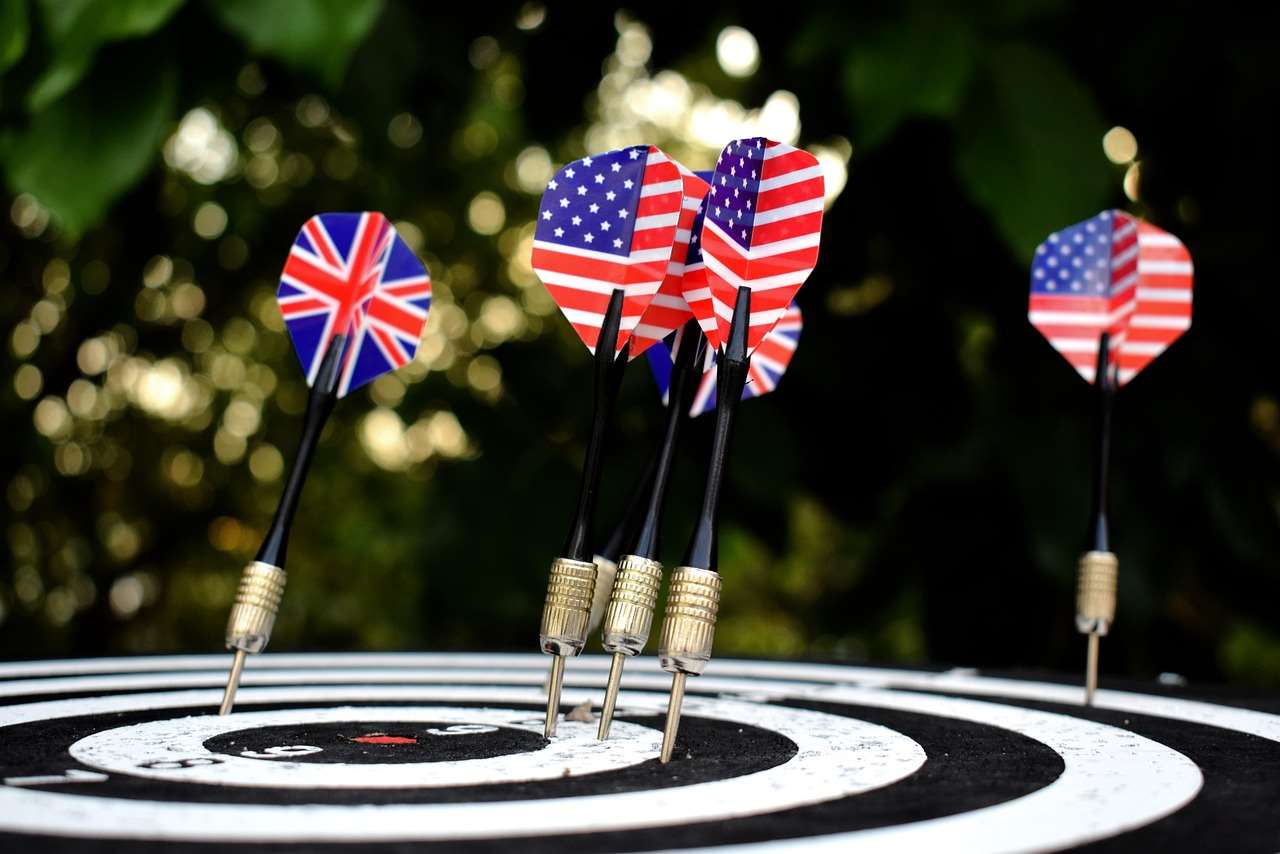
The Throw: Smooth and Controlled
The throw is where all your preparation comes together. Focus on these key elements:
- The Draw: Bring the dart back smoothly and consistently.
- The Release: Release the dart at the same point in your throwing motion every time. Focus on a clean follow-through.
- Elbow Position: Keep your elbow relatively stable throughout the throw. A wandering elbow can lead to inconsistent throws.
Remember to practice your dart throwing technique regularly. Consistent repetition is the key to muscle memory.
Effective Practice Routines for Dart Players
Simply throwing darts without a plan isn’t the most efficient way to improve. Structured practice routines are essential for getting better in darts. These routines help you identify weaknesses and focus on specific areas for improvement.
The Around the Clock Drill
This is a classic practice drill that focuses on accuracy and consistency. The goal is to hit each number on the board in order, starting with 1 and ending with 20. You can make it more challenging by requiring yourself to hit each number with a single dart. This practice sharpens your focus and improves your aim. You can easily keep darts score yourself with this drill.
The Doubles Practice
Doubles are crucial for finishing legs. Spend time practicing hitting doubles. Focus on the doubles you struggle with most. Try starting with double 20, then move onto the other doubles in sequence (double 1, double 2, etc.).
The Scoring Game: 100 at a Time
Start with a score of zero. Throw three darts, aiming to score as close to 100 as possible. If you exceed 100, your score resets to zero. The goal is to reach a predetermined score (e.g., 501) in the fewest number of rounds. This helps you develop your scoring strategy and improve your accuracy under pressure.
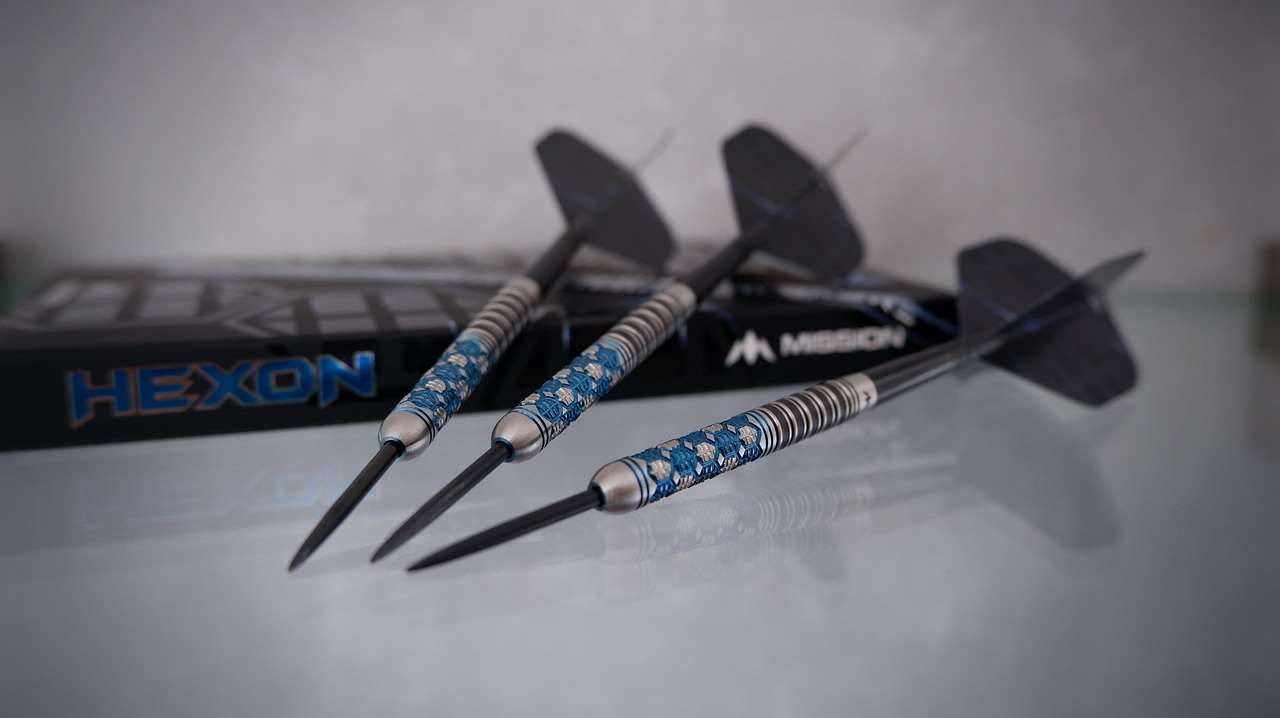
Mental Game Strategies for Dart Success
Darts is as much a mental game as it is a physical one. The ability to stay calm and focused under pressure is crucial for getting better in darts. Mental toughness can be just as important as technical skill.
Visualization Techniques
Before each throw, visualize the dart hitting the target. This helps to focus your mind and improve your confidence. See the dart flying smoothly towards the board and hitting the bullseye or the desired number. Positive visualization can significantly improve your performance. Perhaps use a dart counter camera connect during visualization to track progress.
Dealing with Pressure
Learn to manage your emotions during matches. Don’t let a bad throw derail your entire game. Recognize that everyone makes mistakes, and the key is to bounce back quickly. Practice deep breathing exercises to help you stay calm and focused.
Developing a Pre-Throw Routine
Establish a consistent pre-throw routine that helps you focus and prepare for each throw. This could involve taking a deep breath, visualizing the target, and feeling your grip. A consistent routine can help you enter a state of flow and improve your consistency. This can also help when considering why punch dart flights could improve your consistency.
Equipment Choices and Their Impact
Choosing the right equipment can significantly impact your performance and contribute to getting better in darts. Experiment with different darts, flights, and shafts to find what works best for your throwing style.
Dart Weight and Material
Darts come in various weights, typically ranging from 20 to 26 grams. Heavier darts tend to be more stable in the air, while lighter darts are easier to control. Experiment with different weights to find what suits you best. Dart material, such as tungsten, also affects the dart’s grip and balance.
Flights and Shafts
Flights affect the dart’s aerodynamics and stability. Different flight shapes and sizes can influence the dart’s trajectory. Shafts connect the flight to the barrel and come in various lengths and materials. Experiment with different combinations to find what provides the best stability and accuracy for your throwing style.
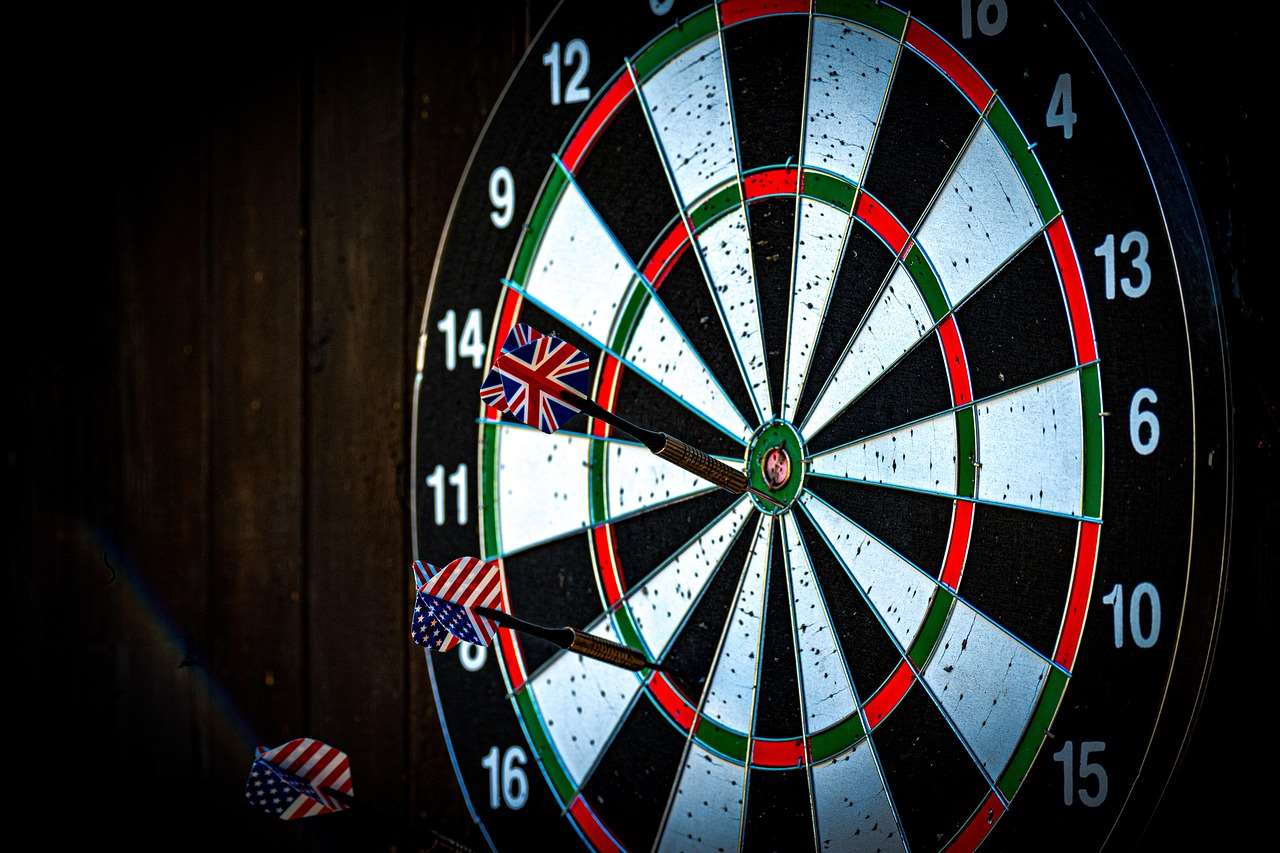
Dartboard Maintenance
A well-maintained dartboard is essential for fair and accurate play. Rotate your dartboard regularly to distribute wear and tear evenly. Remove any loose fibers or debris that may interfere with dart penetration. Regularly check the wiring for any damage and replace it as needed.
Analyzing Your Performance: Identifying Areas for Improvement
Tracking your progress and analyzing your performance is crucial for getting better in darts. Identify your strengths and weaknesses and focus your practice on areas where you need improvement.
Keeping Score and Tracking Stats
Keep track of your scores and stats during practice sessions and matches. This will help you identify patterns and trends in your performance. Track your average score, your doubles percentage, and your number of 180s. Use a darts score app like the Cricket darts scorer app to simplify this process.
Video Analysis
Record yourself throwing darts and analyze your technique. Look for any inconsistencies or flaws in your stance, grip, or throw. Compare your technique to that of professional dart players to identify areas where you can improve. This method can also point you in the direction of helpful dart flights.
Seeking Feedback
Ask experienced dart players for feedback on your technique and gameplay. They may be able to identify areas for improvement that you haven’t noticed yourself. Be open to constructive criticism and use it to refine your skills. Watching highlights dart games can also provide inspiration and insight.
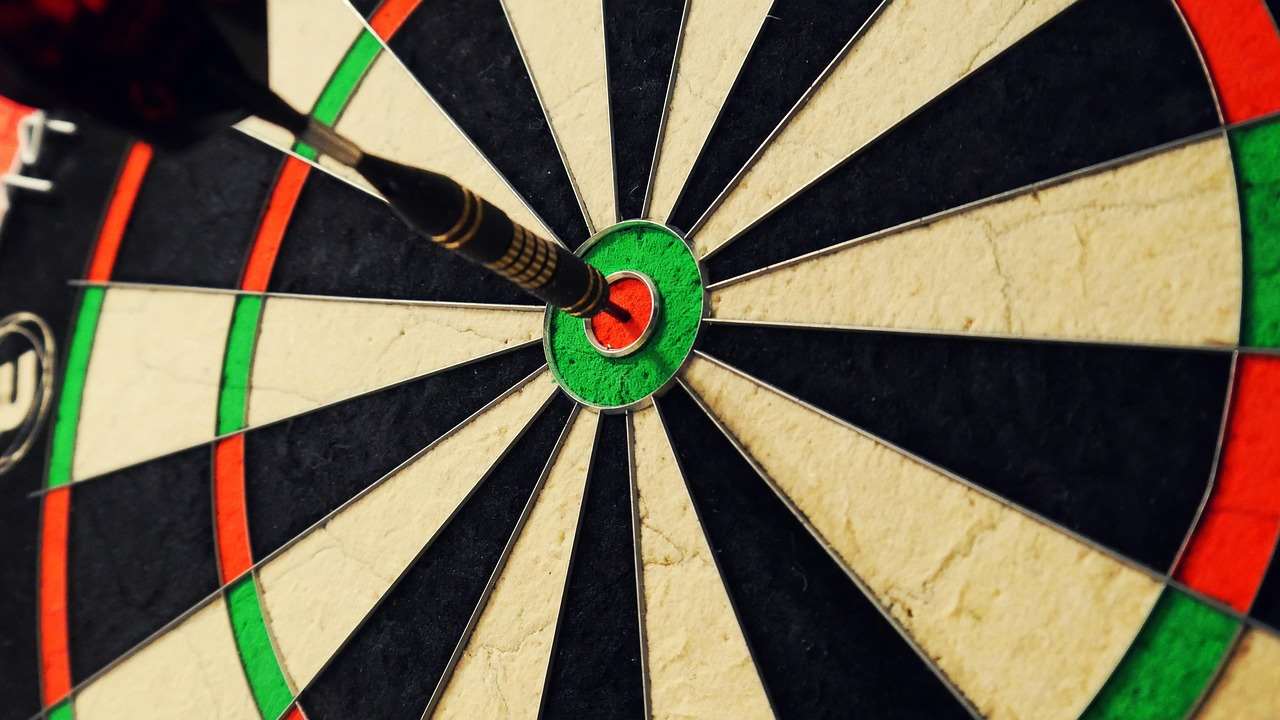
Staying Motivated and Enjoying the Process
Getting better in darts takes time and dedication. It’s important to stay motivated and enjoy the process, even when you encounter setbacks. Setting realistic goals, celebrating small victories, and finding a practice partner can help you stay engaged and motivated. Remember to have fun and enjoy the game!
Setting Realistic Goals
Set realistic and achievable goals for yourself. Don’t expect to become a world champion overnight. Start with small goals, such as improving your average score or hitting a specific double. As you achieve these goals, set new ones to keep challenging yourself.
Finding a Practice Partner
Practicing with a partner can make the process more enjoyable and motivating. A practice partner can provide feedback, offer encouragement, and challenge you to improve. Competing against a partner can also simulate the pressure of a real match and help you develop your mental toughness.
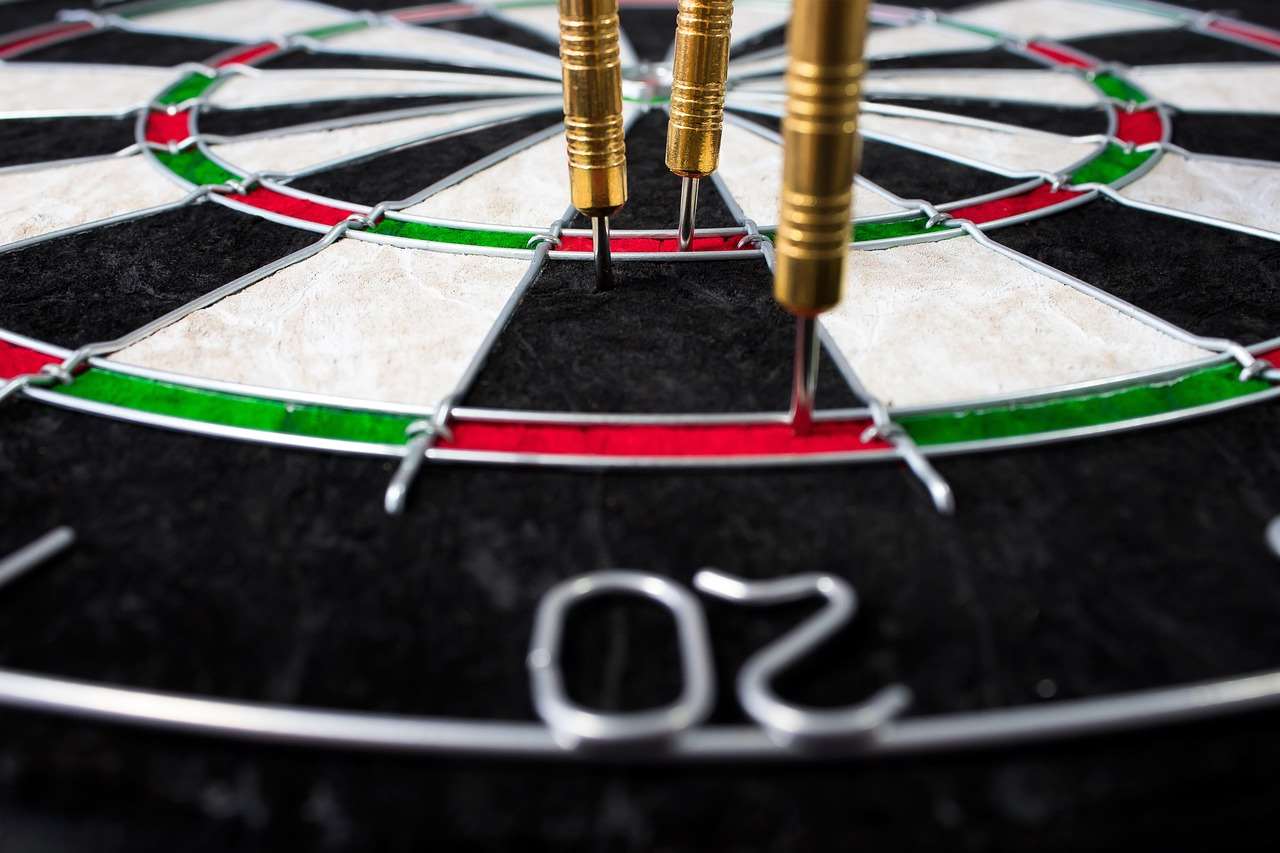
Celebrating Small Victories
Acknowledge and celebrate your progress, no matter how small. Each improvement, whether it’s hitting a new personal best score or finally hitting that elusive double, is a step in the right direction. Celebrating these victories will help you stay motivated and confident.
Conclusion: Your Journey to Darting Excellence
Getting better in darts is a journey that requires dedication, practice, and a strategic approach. By mastering the fundamentals, implementing effective practice routines, developing mental toughness, and analyzing your performance, you can significantly improve your game. Remember to stay motivated, enjoy the process, and celebrate your progress along the way. Take these tips and put them into practice today to elevate your dart game and start hitting those bullseyes consistently. Now, go out there and start throwing!
Hi, I’m Dieter, and I created Dartcounter (Dartcounterapp.com). My motivation wasn’t being a darts expert – quite the opposite! When I first started playing, I loved the game but found keeping accurate scores and tracking stats difficult and distracting.
I figured I couldn’t be the only one struggling with this. So, I decided to build a solution: an easy-to-use application that everyone, no matter their experience level, could use to manage scoring effortlessly.
My goal for Dartcounter was simple: let the app handle the numbers – the scoring, the averages, the stats, even checkout suggestions – so players could focus purely on their throw and enjoying the game. It began as a way to solve my own beginner’s problem, and I’m thrilled it has grown into a helpful tool for the wider darts community.